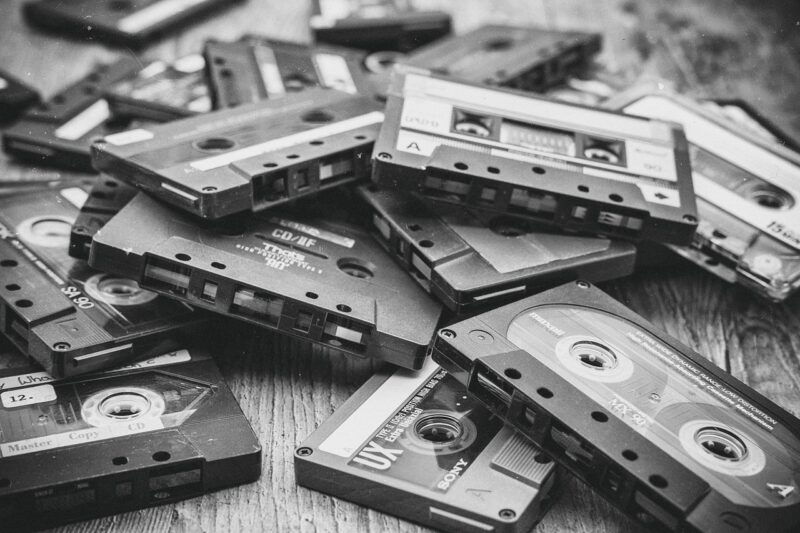The Strangest Things People Collect and Why They’re Obsessed With Them
November 14, 2024

Collecting has long been a favorite pastime for many, from the casual hobbyist to the dedicated enthusiast. While most people may think of collecting as the act of amassing stamps, coins, or baseball cards, the reality is that people collect all sorts of bizarre and unusual items. This article delves into some of the strangest things people collect and explores the psychological and emotional factors that drive these obsessions.
1. Unusual Collections: A Look at the Oddities
Throughout history, collectors have gathered diverse and curious items. Here are some of the most peculiar collections:
- Nail Clippings: Some people find it fascinating to collect their own nail clippings or those of others, often storing them in jars for safekeeping. While it may seem strange, for some, it symbolizes control or resourcefulness, and the documentation of personal history.
- Celebrity Hair: Collectors will pay handsomely for locks of hair from famous personalities, believing these relics carry a piece of the star’s essence. These collections often highlight our fascination with fame and identity.
- Taxidermy: From common animals like squirrels to exotic creatures, taxidermy collections can be astounding. Enthusiasts often seek to exhibit the beauty of nature or preserve the memory of loved pets or exotic vacations.
- Napkin Holders: Some people gather napkin rings or holders, especially vintage or themed ones. This peculiar obsession often ties back to nostalgia or an appreciation for various designs and craftsmanship over the decades.
- Seasonal Mascots (e.g., gnomes or lawn flamingos): Collections of lawn décor can sometimes take over properties! People often view them as symbolic protectors of their homes, while others enjoy the humor and charm they bring.
These unusual collections often stem from personal experiences and the unique psychology of the individual, leading us to explore why some people become obsessed with collecting specific items.
2. The Psychology Behind Collecting
The act of collecting satisfies various psychological needs and can be understood through different lenses:
- Nostalgia and Sentimentality: Many collectors are driven by memories associated with collected items. Having a tangible piece of the past can trigger fond reflections and emotional connections.
- Control and Security: Collecting can provide a sense of control and stability in a chaotic world. Gathering items can represent an attempt to impose order or mastery, allowing individuals to feel centered and secure.
- Connection to Others: For some, collecting can facilitate connections with others in a community of fellow enthusiasts. Sharing interests and passion can foster friendships and social ties.
- Personal Identity: Collections often serve as an extension of the collector’s identity. The items can reflect their values, interests, and sense of self, showcasing unique tastes and perspectives to the broader world.
- The Chase: The thrill of the hunt—finding a rare or missing item—can fuel a collecting obsession. The excitement of acquiring unique pieces often outweighs the intrinsic value of the items themselves.
Together, these factors highlight that the obsession with collecting can often serve as a complex intersection of personal history, emotional needs, and social interaction.
3. Collecting Across Cultures: Global Oddities
Around the world, the act of collecting often takes fascinating forms, showcasing the diversity of human interests and cultures:
- Japanese Kintsugi: In Japan, Kintsugi is the art of repairing broken pottery with lacquer dusted or mixed with powdered gold, silver, or platinum. Many collectors appreciate these unique pieces that carry their history beautifully, embracing imperfection and resilience.
- Western Pop Culture Memorabilia: From comic books to collectible action figures, individuals obsess over specific franchises or series, reveling in their connection to characters and narratives that influenced their lives.
- Italian Cheese Labels: Collectors in Italy amass colorful cheese labels, celebrating regional culture and tradition. Each label tells a story of artisanal craftsmanship and local pride, making them highly sought after by collectors.
- African Tribal Masks: Many collect traditional tribal masks, each with its own symbolism and significance in cultural rituals and practices. Collectors often appreciate the artistry and deep-rooted heritage behind these remarkable artifacts.
This global perspective enhances our understanding of the human obsession with collecting—it’s a universal thread connecting people through different cultures, backgrounds, and experiences.
4. The Economic Aspect of Collecting
While collecting is primarily driven by passion and emotional fulfillment, it can also evolve into a financial venture for many:
- Investment Opportunities: Many collectors see their collections as investments, often preserving items that gain value over time and yielding profitable returns. Rare art pieces, vintage toys, or sports memorabilia can command impressive prices in auctions or sales.
- Flip Collectibles for Profit: Savvy collectors may search for undervalued items at garage sales or local thrift stores, then resell them for a substantial profit. This aspect adds a layer of excitement and business acumen to the hobby.
- Auction Houses & Collectible Markets: Renowned auction houses regularly showcase collectibles, allowing for buyers and sellers to connect. This interaction cultivates a thriving marketplace that celebrates and elevates collecting as an economic venture.
This economic dimension of collecting juxtaposes the emotional and personal aspects, underscoring its multifaceted nature.
5. The Future of Collecting: Trends and Innovations
As technology pushes boundaries, the future of collecting faces exciting transformations:
- Digital Collectibles (NFTs): Non-fungible tokens (NFTs) represent a digital evolution of collectibles, enabling ownership of unique digital assets like art, music, or virtual real estate. This trend demonstrates a shift towards embracing technology in traditional collecting concepts.
- Augmented Reality Collecting: New applications allow collectors to visualize their collections in augmented reality, opening doors to enhanced showcases and displays that can be shared online, enriching community engagement.
- Sustainable Collecting: The rising consciousness about sustainability prompts collectors to seek ethically sourced and environmentally friendly items, highlighting a shift in collective values and priorities in collecting practices.
With such innovations, collecting will continue to evolve, inspiring new generations of enthusiasts to discover meaning and connection through their curiosities.
Conclusion: Embracing the Strange and Wonderful
The strangest things people collect often reflect the eccentric personalities behind them. From nail clippings to taxidermy, these collections tell fascinating stories about human experience, aspiration, and deep-seated psychology. Ultimately, collecting is about finding joy in the peculiar, preserving memories, and connecting with others who share similar passions. As society progresses, these unusual collections offer windows into our diverse desires and motivations, inviting curiosity about what others treasure. Embracing the strange can enrich our understanding of what it means to be uniquely human.







